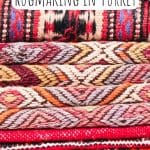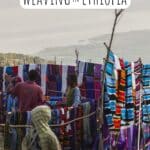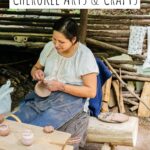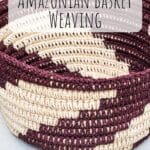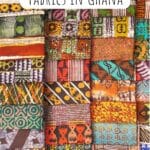A Brief History of Moroccan Rug Weaving
Moroccan rug weaving is an ancient tradition that intricately weaves together the cultural heritage, historical influences, and artistic expressions of Morocco. Renowned for their vibrant colors, intricate patterns, and historical significance, Moroccan rugs, also known as carpets or kilims, offer a fascinating glimpse into the artistry and craftsmanship of Moroccan culture. This article explores the rich history of Moroccan rug weaving, its cultural significance, the techniques used, and where to experience these beautiful creations in person today.
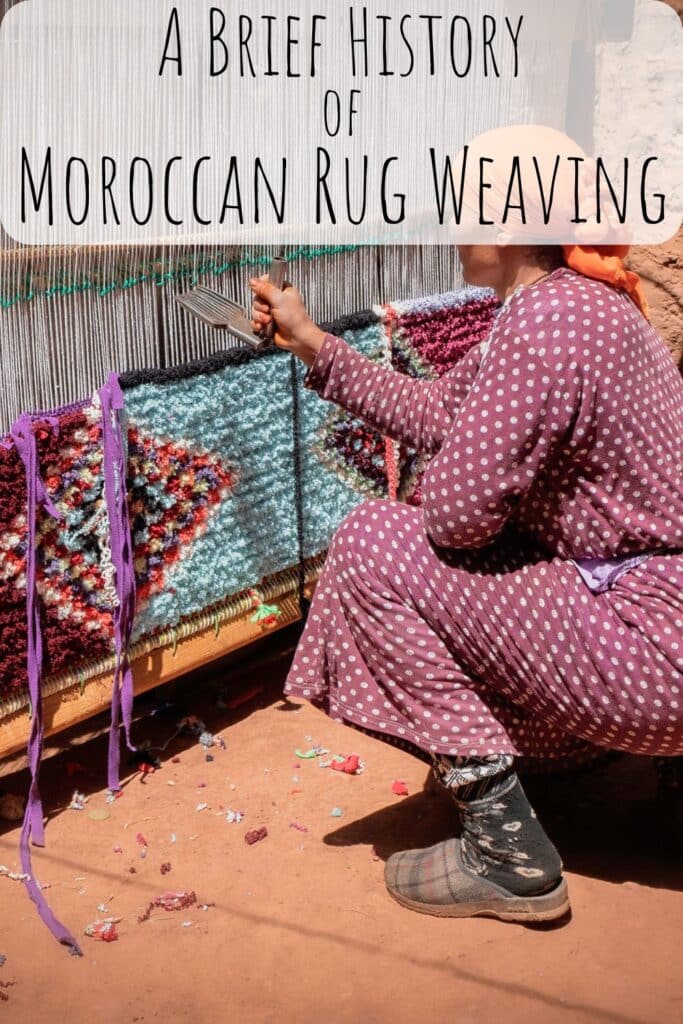
Historical Overview
The tradition of Moroccan rug weaving dates back centuries, with roots in the Berber tribes of the Atlas Mountains. These indigenous groups, including the Berbers, Tuaregs, and other Amazigh communities, have been crafting rugs for over a millennium. The art of weaving was passed down through generations, each adding their unique touch to the craft. Historically, Moroccan rugs were more than mere decorative items; they served practical purposes in everyday life, from providing warmth in the cold mountainous regions to serving as seating areas and prayer mats.
In ancient times, the practice of rug weaving was closely linked to the nomadic lifestyle of the Berber people. Rugs were woven from natural materials such as sheep wool, camel hair, and cotton, dyed using local plant-based dyes. The designs and patterns often held symbolic meanings, reflecting the weaver’s personal experiences, tribal affiliations, and spiritual beliefs.
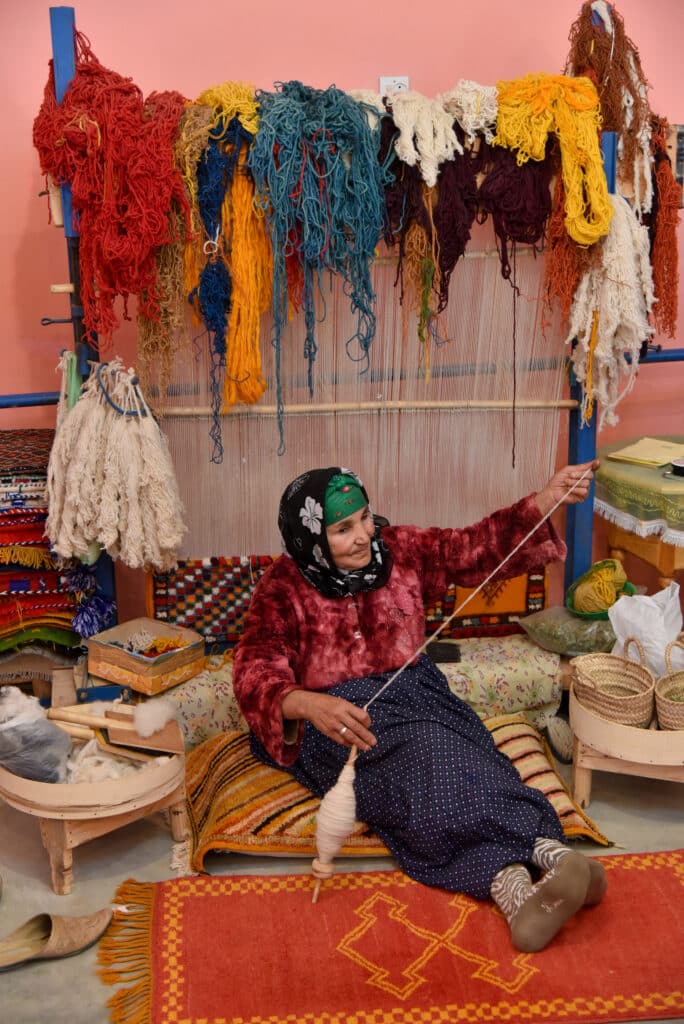
Cultural Significance
Moroccan rugs are deeply embedded in the cultural fabric of Morocco. Each rug tells a story, with its patterns and colors representing various aspects of Moroccan life. For instance, Berber rugs often feature geometric patterns and symbols that signify tribal identity, family lineage, and social status. These designs are not only visually striking but also serve as a form of visual storytelling, preserving the history and traditions of the Moroccan people.
The use of vibrant colors and intricate patterns in Moroccan rugs is also a reflection of the region’s rich cultural exchanges. Over the centuries, Moroccan weavers have been influenced by various cultures, including the Phoenicians, Romans, Arabs, and French, which have left their mark on the artistic style and techniques used in rug weaving.
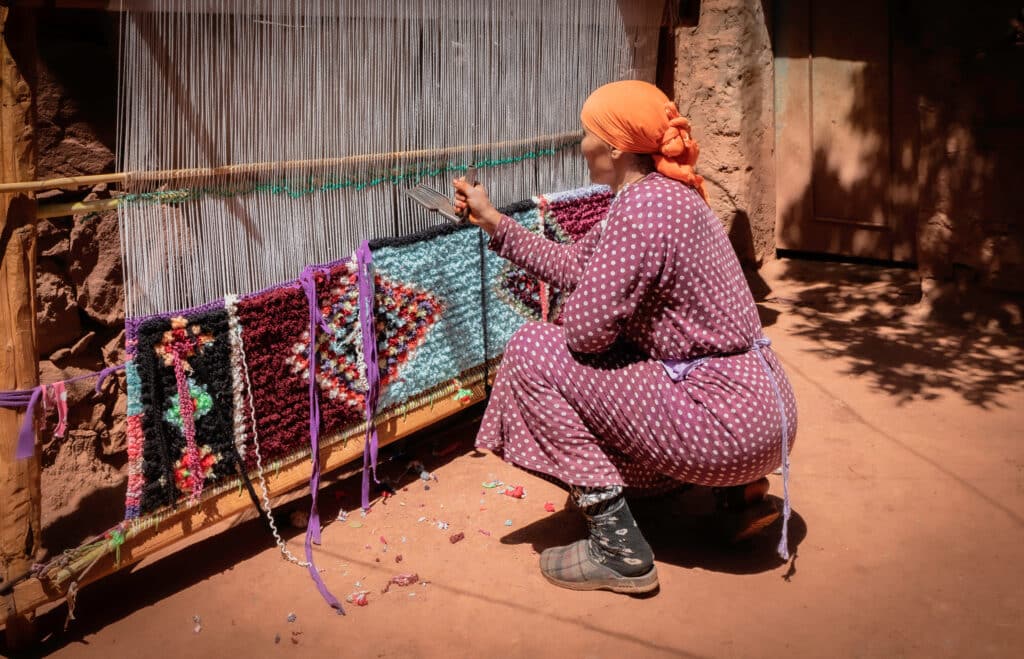
Rug Weaving Techniques
Moroccan rug weaving involves several distinct techniques, each producing a unique style of rug. Some of the most notable techniques include:
Berber Knotting
This traditional technique involves tying knots by hand to create textured and durable rugs. The Berber knot is a prominent feature in many Moroccan rugs, providing a plush, dense pile. Rugs made with this technique are often characterized by their abstract patterns and rich, natural colors.
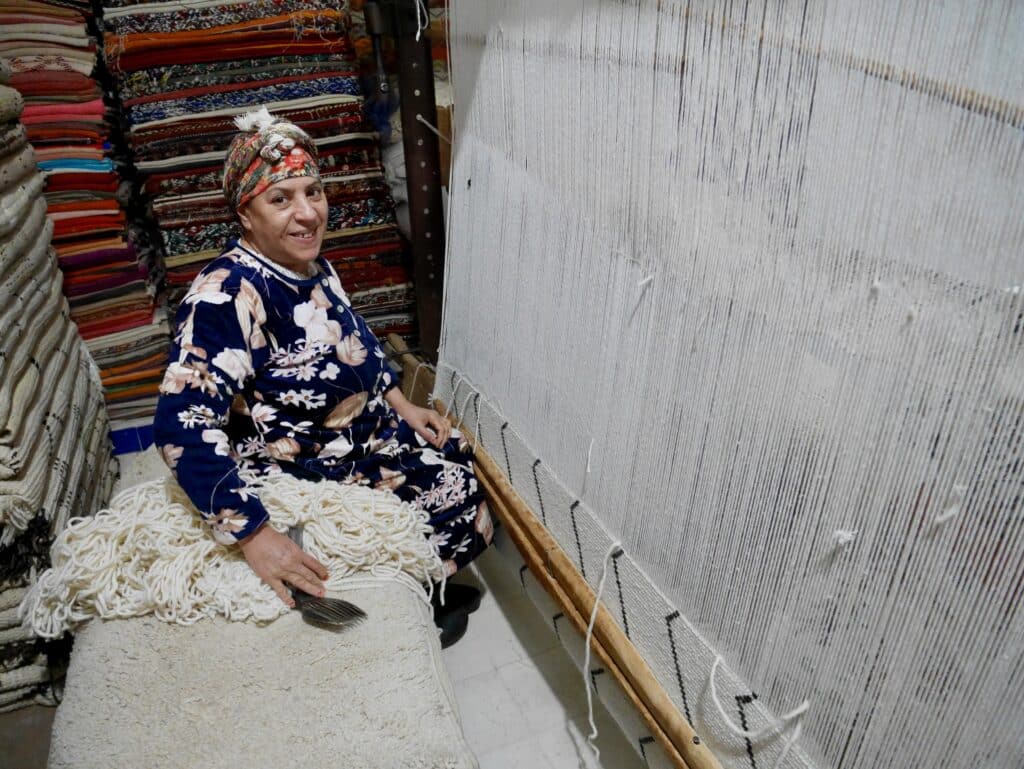
Flat Weaving
Also known as “kilim” weaving, this technique involves interlocking warp and weft threads to create a flat, reversible rug. Kilims are typically thinner and lighter than knotted rugs and often feature geometric patterns and bold colors. This technique is particularly popular among the Tuareg and other nomadic groups.
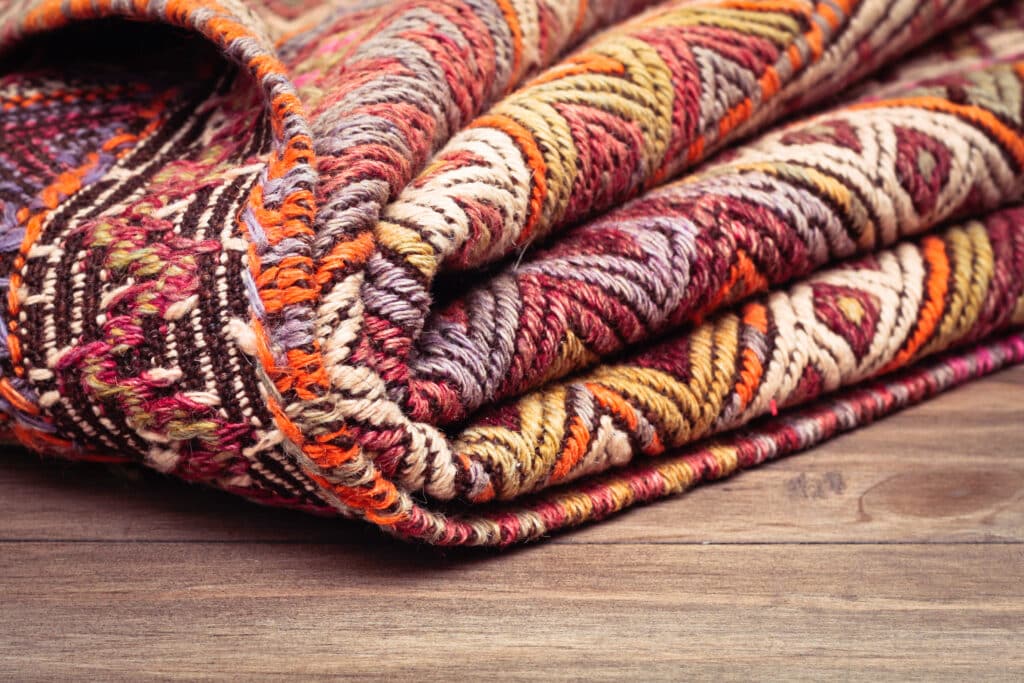
Souk Rugs
These are typically handwoven in urban areas and sold in local markets (souks). Souk rugs often feature more elaborate and detailed patterns compared to traditional Berber rugs, reflecting a blend of various artistic influences.

Azilal Rugs
Originating from the Azilal region in the High Atlas Mountains, these rugs are known for their vibrant colors and abstract patterns. The Azilal technique involves creating intricate designs with a mix of wool and cotton, resulting in visually striking and highly collectible rugs.
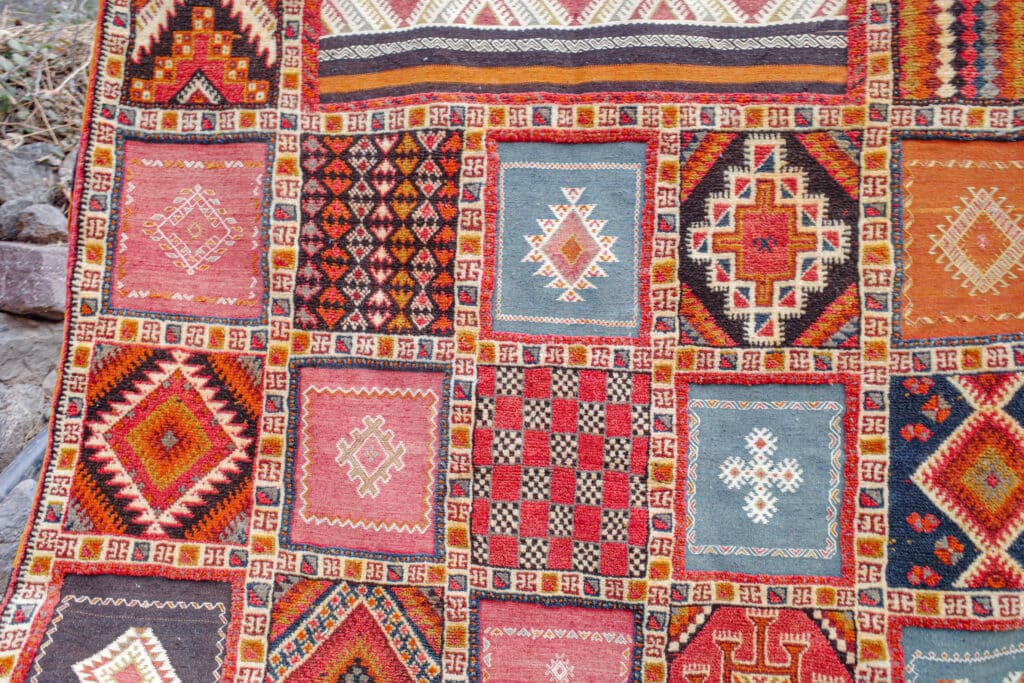
Experiencing Moroccan Rug Weaving Today
For those interested in experiencing Moroccan rug weaving firsthand, several opportunities exist across Morocco. Visiting local markets, rug cooperatives, and weaving workshops offers a unique glimpse into the artistry and craftsmanship of Moroccan rugs. Some notable places to explore include:
Marrakech
The city of Marrakech is renowned for its vibrant souks, where visitors can find a wide variety of Moroccan rugs. The medina, or old town, is home to numerous rug shops and cooperatives where traditional weaving techniques are practiced. The Marrakech Museum and the Yves Saint Laurent Museum also showcase Moroccan textiles and offer insights into their historical significance.
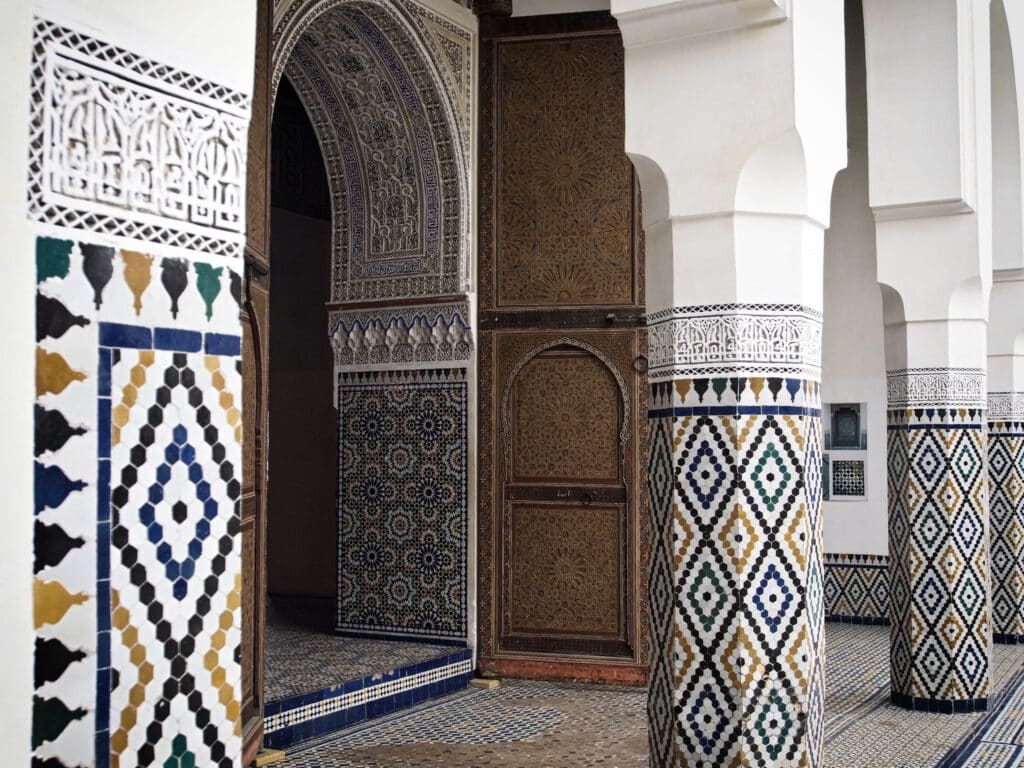
Fes
Known for its rich history and cultural heritage, Fes is another excellent destination for experiencing Moroccan rug weaving. The city’s medina features several workshops and shops specializing in traditional rugs. The Bou Inania Madrasa and the Dar Batha Museum of Islamic Arts are also great places to learn about the history of Moroccan textiles.
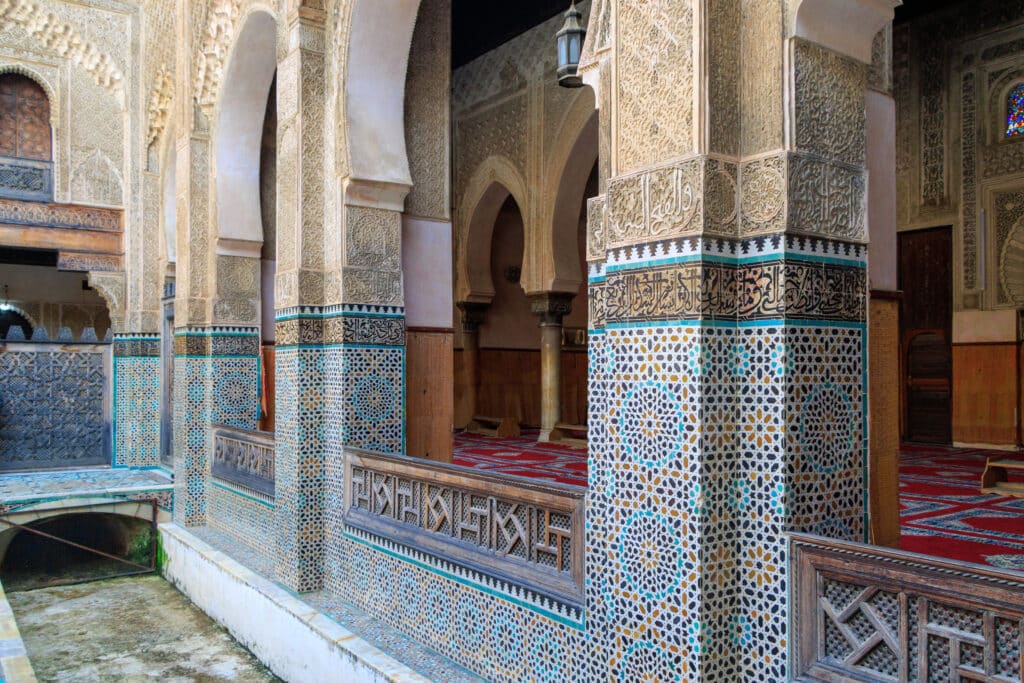
Chefchaouen
This picturesque town in the Rif Mountains is famous for its blue-washed buildings and artisanal crafts. Local rug weavers in Chefchaouen produce unique rugs with distinctive patterns and colors. Visiting local cooperatives and markets provides an opportunity to witness the weaving process and purchase handcrafted rugs.

Atlas Mountains
For a more immersive experience, consider visiting the rural regions of the Atlas Mountains, where many traditional Berber tribes continue to practice ancient weaving techniques. Guided tours and workshops offer a deeper understanding of the cultural significance of rug weaving and provide a chance to interact with local artisans.
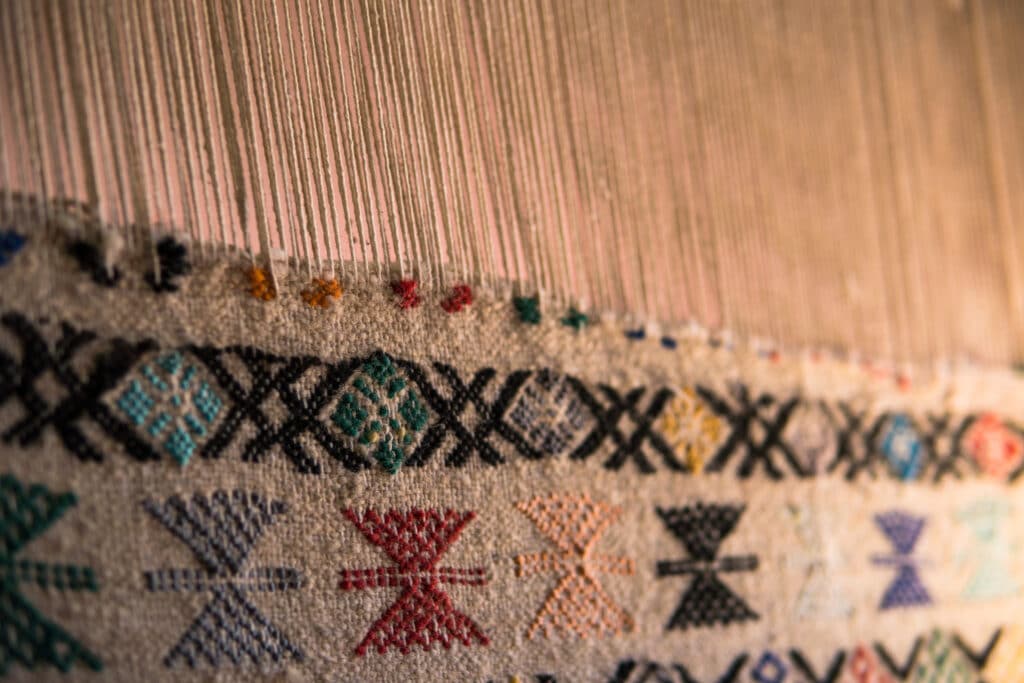
Moroccan rug weaving is a vibrant and integral part of Morocco’s cultural heritage. The tradition, which dates back centuries, reflects the artistic and historical influences of various cultures and showcases the skill and creativity of Moroccan artisans. From the intricate knotting techniques of Berber rugs to the flat weaving of kilims, each rug tells a unique story, preserving the rich history and traditions of Moroccan society. For those looking to experience this remarkable craft firsthand, Morocco offers numerous opportunities to explore the world of rug weaving, from bustling souks to serene mountain villages.
